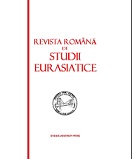THE SYMBOLISM OF THE FUNERARY ART AT TOMIS IN THE PRINCIPATE EPOCH (1st - 3rd CENTURIES A.D.)
THE SYMBOLISM OF THE FUNERARY ART AT TOMIS IN THE PRINCIPATE EPOCH (1st - 3rd CENTURIES A.D.)
Author(s): Angela-Anca DobreSubject(s): History
Published by: Ovidius University Press
Keywords: funerary; rite; ritual; funerary lions; Thanathos
Summary/Abstract: The funerary customs and practices represent a projection of the people’ beliefs and mentalities about the “other world”. The funerary rites and rituals were established according to the human communities representations about the Earth pre-existence. We can affirm that the religious life was reduced, in all the epochs, to speculations about the soul faith after death. Anyway, both the ancient Greek and Roman philosophy and literature is rich in theories and descriptions of “the life after death.” There can be considered the most suggestive for representing the belief in immortality, the symbols as funerary monuments themselves, and we speak here about the pine cone, Thanatos or the funerary lions. A unique sample on the Romanian territory is the pine cone in the necropolis of Tomis. The sculpted lions on the funerary monuments are to be found in the whole Roman world. Beginning with the 2nd century A.D., there are to be found lions with ptotecting role as independent funerary monuments. This type of funerary monument appears also in the Tomitan necropolis dated in the period of the principate. Another representation of the deceased on the funerary monument is Thanatos. In the Tomitan funerary customs, as well as in the Dobrujan ones, there were defined many iconographic types of him.
Journal: Revista Română de Studii Eurasiatice
- Issue Year: 7/2011
- Issue No: 1+2
- Page Range: 45-52
- Page Count: 8
- Language: English

